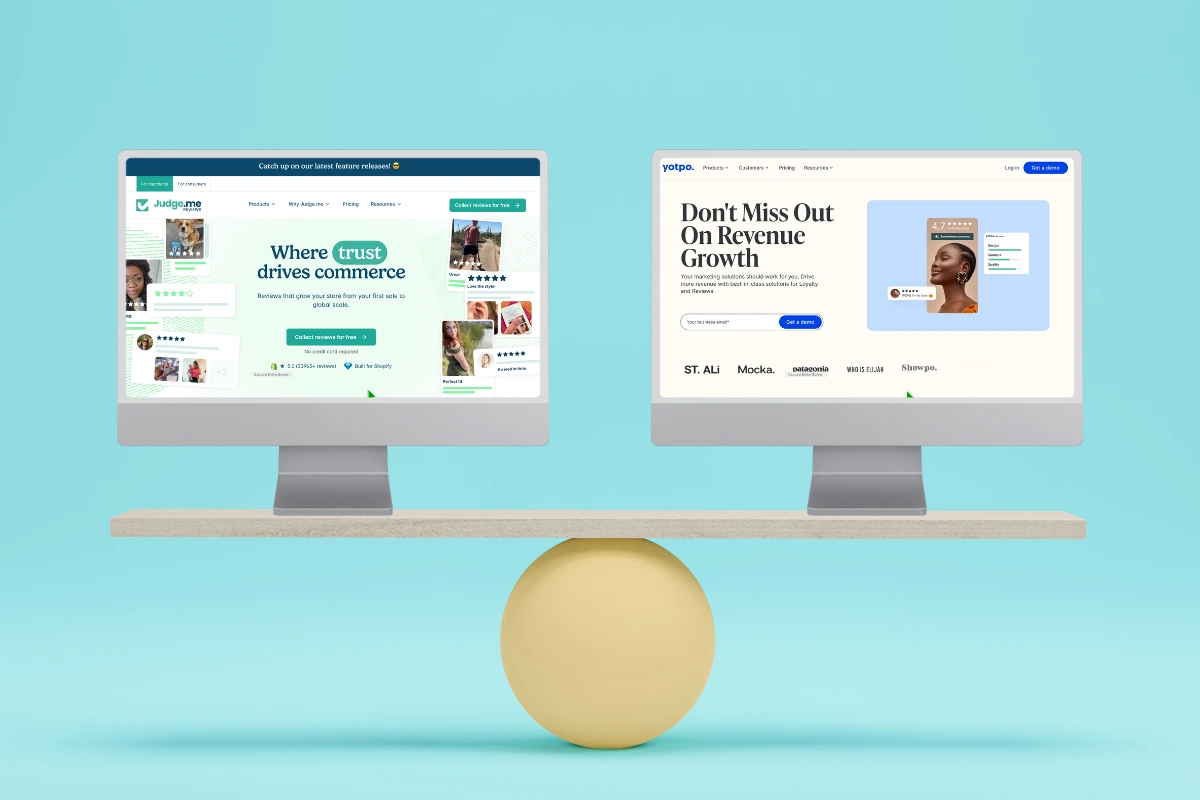The 8 Best Headless Ecommerce Platforms in 2026
- Headless ecommerce platforms separate the back and front ends, allowing businesses to make changes quickly and stay flexible while offering a seamless, customized experience to their customers
- The best headless commerce choices nowadays include Shopify, BigCommerce, Spryker, Magento, and Salesforce
- While pricing is varied, all of these platforms offer numerous APIs and customization options for ecommerce store owners
- Headless ecommerce platforms separate the back and front ends, allowing businesses to make changes quickly and stay flexible while offering a seamless, customized experience to their customers
- The best headless commerce choices nowadays include Shopify, BigCommerce, Spryker, Magento, and Salesforce
- While pricing is varied, all of these platforms offer numerous APIs and customization options for ecommerce store owners
If you’re serious about running an ecommerce store in 2026, there is one thing you need to look at beyond your products and ideal target audience. There is one thing that’s equally important, if not even more - your tech stack. The way your ecommerce store is set up can make operations run more smoothly and sell more stock every day.
One way to get this done is called headless ecommerce. These platforms separate the layers of your website so that you can give customers customized experiences on every device and easily connect to ecommerce APIs.
Today, we’ll show the most important benefits of headless ecommerce platforms, as well as round up some of the best choices to consider in 2026.
What is a headless ecommerce platform?
Headless in web terminology means that a website content management system (CMS) or ecommerce platform has two different layers. It separates the front end (where your store is, and what your customers can see) and the back end (where you manage the website).
In a traditional ecommerce platform setup, the back and front ends are tied together. This means that any change you want to make in the front end requires some back-end tinkering as well.
The problem? This means that for even the smallest of changes (say, editing a product description), you’re going to need the assistance of a developer.
Headless allows you to control all the aspects of your site back-end from one place, and publish content across platforms such as websites and mobile apps. For developers, headless ecommerce is the preferred choice because it allows them to use APIs to access the back-end and build custom front-end experiences.
Advantages of headless ecommerce platforms
If you’re considering ditching your traditional ecommerce platform with an ecommerce one, there are several good reasons why.
More flexibility and customization
Headless lets you customize the front end extensively without impacting the back end. You can easily create customized experiences suited just for your target audience. For example, different product categories or customized plugins for location-based product suggestions.
Seamless experience across different platforms
Headless systems store all of your content in a backend content repository. When you need to publish, you can do so using an API, and publish the same content across your website, mobile app, social media, and anywhere else that your API is connected to.
Faster time to market
Back-end developers can work separately from the front-end team, allowing you to launch your ecommerce store more quickly. If you want to make changes on the front end, you can do it without waiting for complex back-end development to be finished.
Future-proofing your store
Whether it’s the back or front end, you can make changes to your store quickly. For example, there’s a new API that your developers need to connect to your store - a matter of a few hours. You don’t have to change your entire ecommerce store platform just to adapt to new trends. You’re not locked to a single vendor for the lifetime of your store.
Top headless ecommerce platforms to try in 2026
If you want to say goodbye to traditional ecommerce store platforms, there are a few great choices. Here are the ones we personally recommend.
But before we get into that, did you know that you don't even need a headless ecommerce platform to build an app? With MobiLoud, you're just two weeks away from a brand new website, by converting your existing website to a mobile app. See how that would look like today!
Shopify Headless
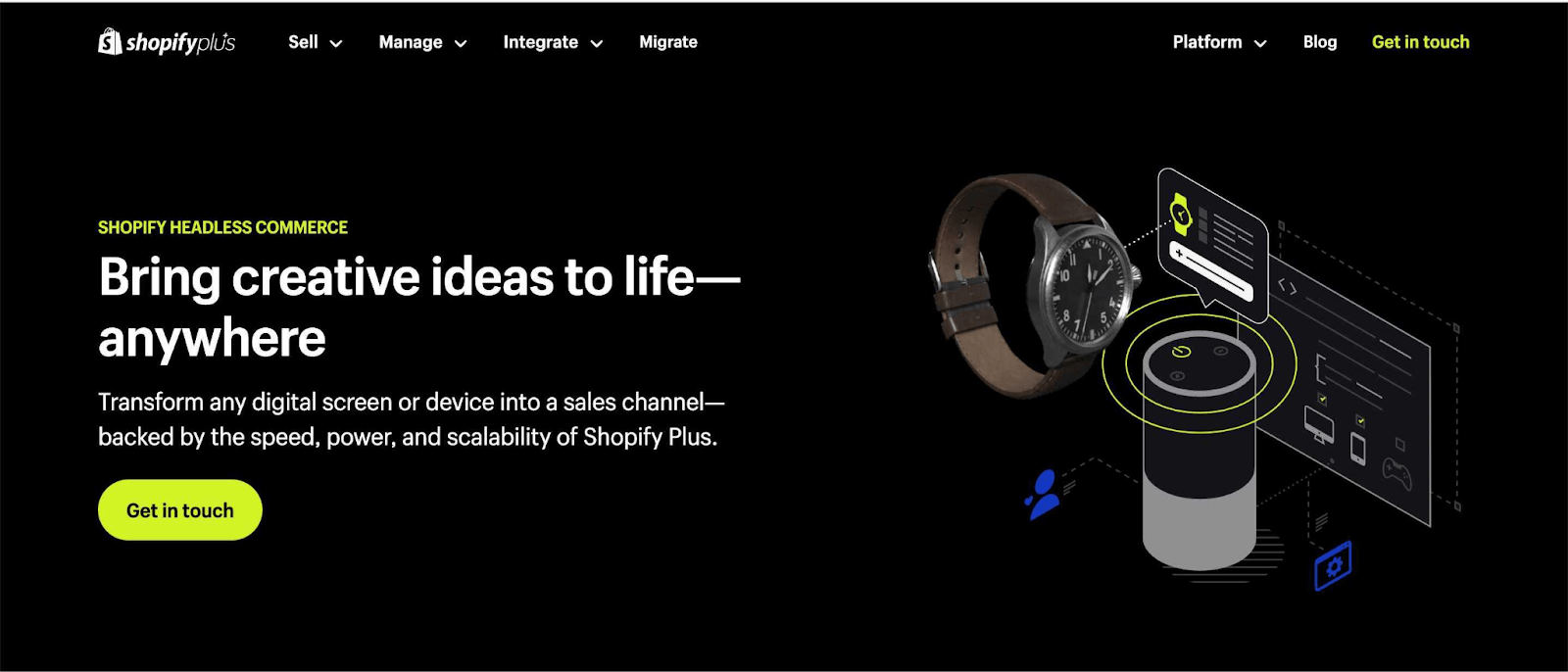
There’s a good chance that your store is already set up on Shopify, especially if you just recently started your ecommerce store. The great news is that Shopify Headless comes out of the box with all the basic ShopifyPlus packages. This means that starting at $2,300 per month (with a one-year commitment), you can grab a new headless ecommerce platform.
If you’re already on Shopify - simply upgrade to it.
It uses a proprietary API called GraphQL for storefronts, which allows you to quickly whip up and edit the front ends of your store. To build your store in Shopify, you can use their proprietary Hydrogen and Oxygen, blocks of components and hosting layers for stores.
The great news is that there are tons of great Shopify developers available out there, so getting a store up and running in this setup is going to be a breeze.
PS. if you want to turn your Shopify store into a mobile app, we have a guide on that.
Centra

If you run a fashion brand and need a quick way to be present in different markets and languages, Centra should be on your radar. Its API first approach is the first reason it's loved by developers and store owners. The second reason is the support for multi-language, multi-currency and multi-region setup.
If you need to run different versions of your headless ecommerce store in a variety of languages and currencies, Centra can make it happen without using complex plugins or taking days and weeks to set up. Centra integrates with just about any technology or front-end CMS, so you don't have to fully abandon your curent setup.
Pricing is not available publicly and you have to get a demo first to get a quote personalized for your unique needs and requirements.
BigCommerce Headless
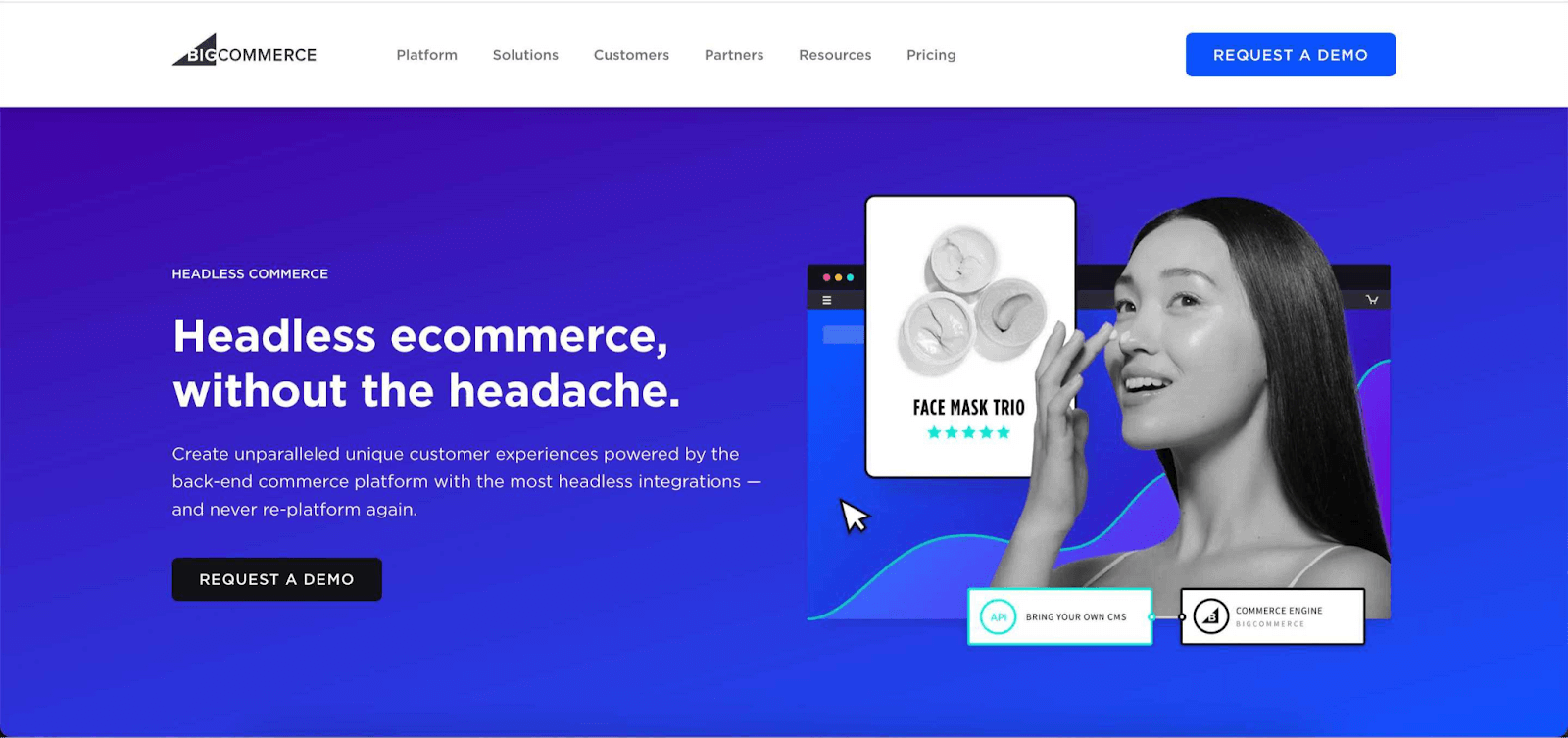
Just like Shopify, BigCommerce added a headless option to their offer. Similar to their main offer, the headless one is more suited for enterprise customers.
The two layers are split up this way: you can use Next.js, Gatsby.js, and Nuxt.js as your front end. As your back end, you have a wide choice of content management systems: WordPress, Contentful, Prismic, and Contentstack.
There is support for a wide variety of APIs, from Drupal, Stripe, Amazon, MailChimp and many others. Their customer support is traditionally known as extremely responsive, so you have nothing to worry about if you get stuck. By the way, you can turn BigCommerce websites into mobile apps without using expensive developer help.
Pricing is not available publicly and you have to get in touch to get more information.
Fabric
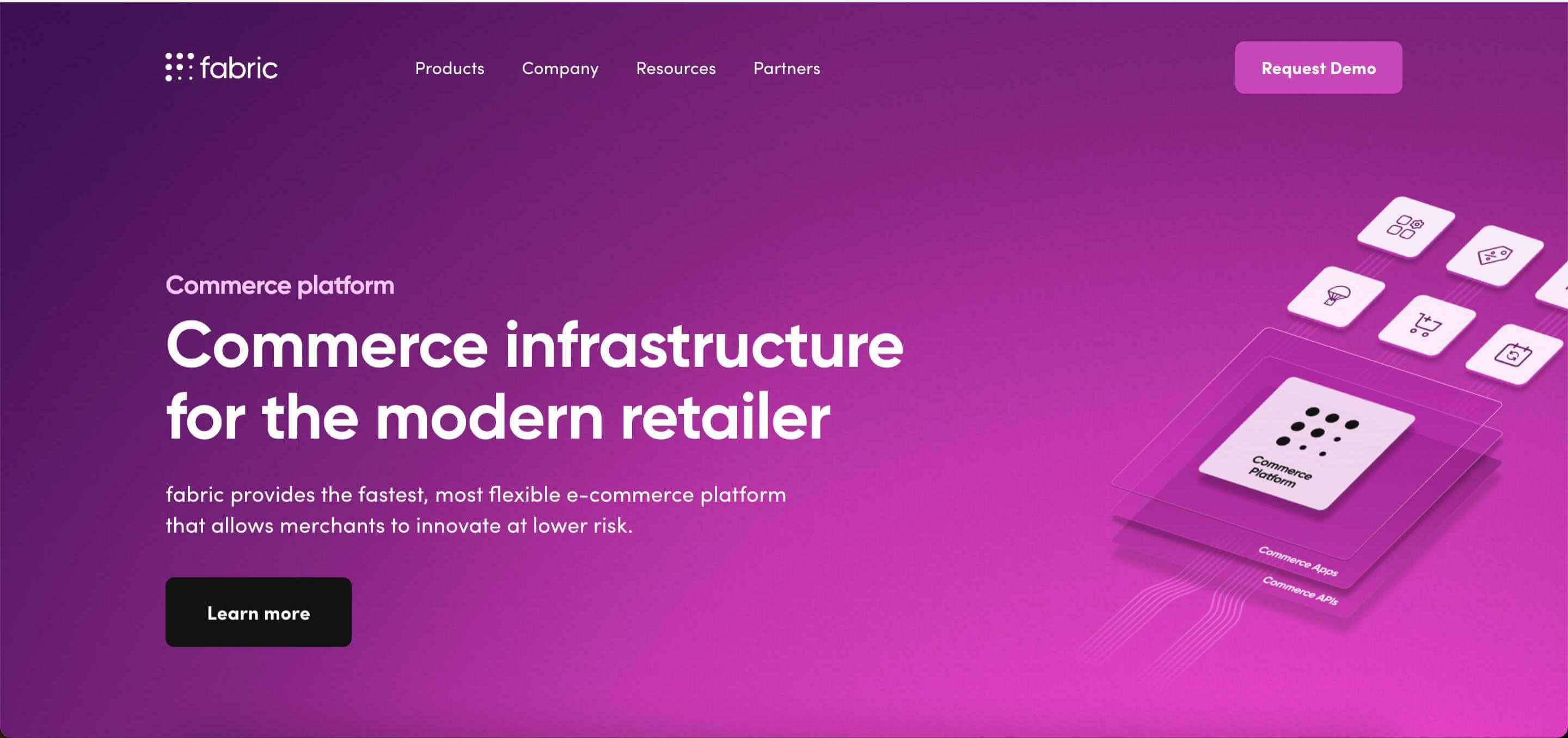
From merchandising to fulfillment, Fabric helps you create the complete customer journey, without using developer resources. Compared to most competitors, Fabric is very fast and provides a modular, API-first headless experience. While Fabric claims that you can unlock most of the capabilities of this platform without dev resources, the reality is that it's a very customizable and flexible platform.
Whether you're in B2B or B2C, Fabric has all the tools to help set up and launch a truly omnichannel headless experience.
To find out how much Fabric costs, you're going to have to get a demo first.
Joomla

It's not the most popular CMS in the world, but for the right set of people, Joomla is the best choice for a CMS out there. You can customize it to meet all of your needs, and with an ecommerce plugin, you can turn an ordinary website into an ecommerce store.
To do that, you can simply choose from one of the many ecommerce extensions. The most popular ones include Hikashop, Eshop, J2store, and many others. Besides extensions for online stores, you can also get support for a variety of payment gateways, such as PayPal or Stripe.
Joomla is not as intuitive as Wordpress, Shopify and other platforms, but with the right kind of setup and the right team of developers, you can create a fully customized store according to your needs and desires.
Spryker
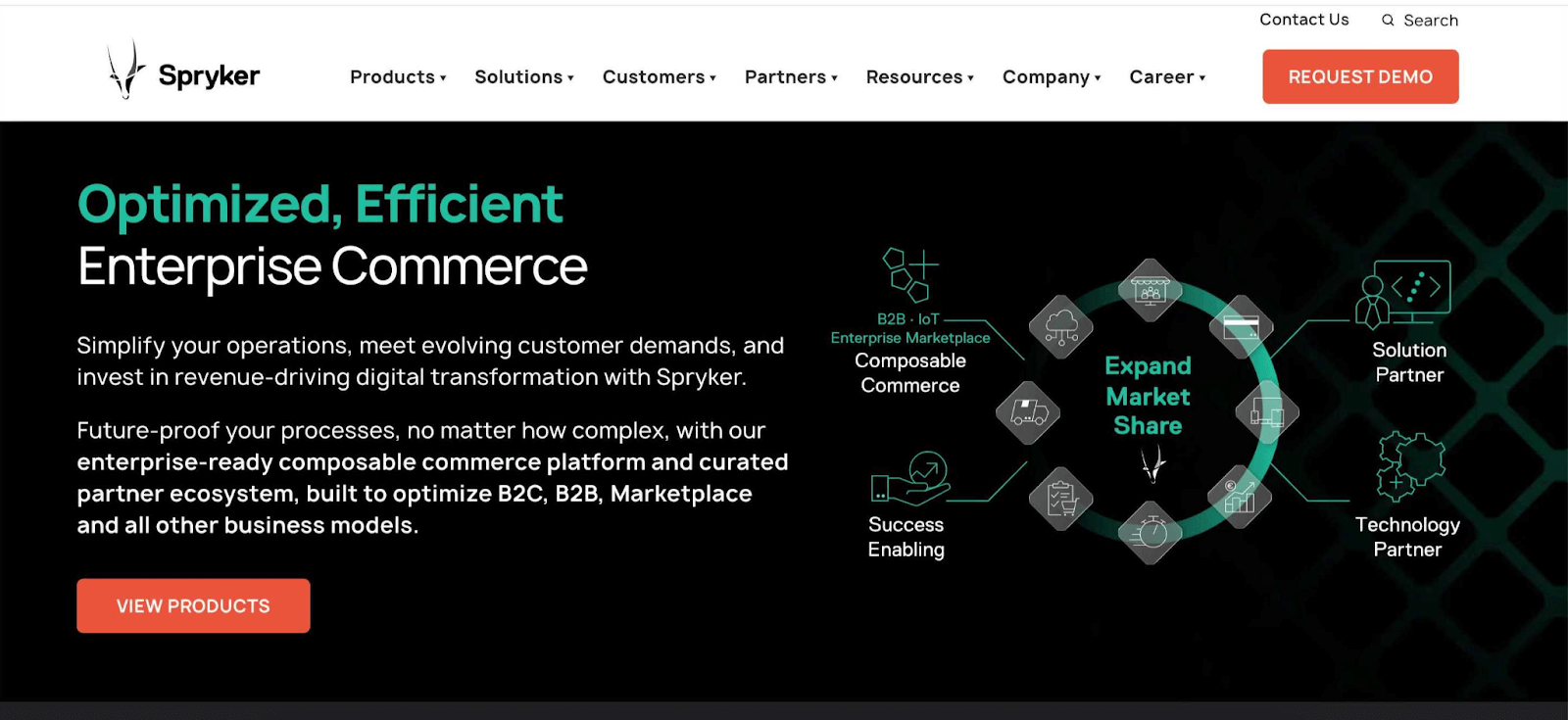
There’s a good chance you’ve already visited a Spryker-based ecommerce store before, as it’s a widely popular solution in the enterprise sector. Both business owners and developers love it, and for a good reason.
Its fully composable architecture comes with more than 900 APIs, with GLUE API being the basis your developers can use. You can build websites and ecommerce stores from scratch and connect a wide variety of platforms and devices to your headless content repository.
In true enterprise fashion, Spryker pricing is not available publicly - you have to get in touch to find out how much the tool costs.
Magento Headless (Adobe Commerce)
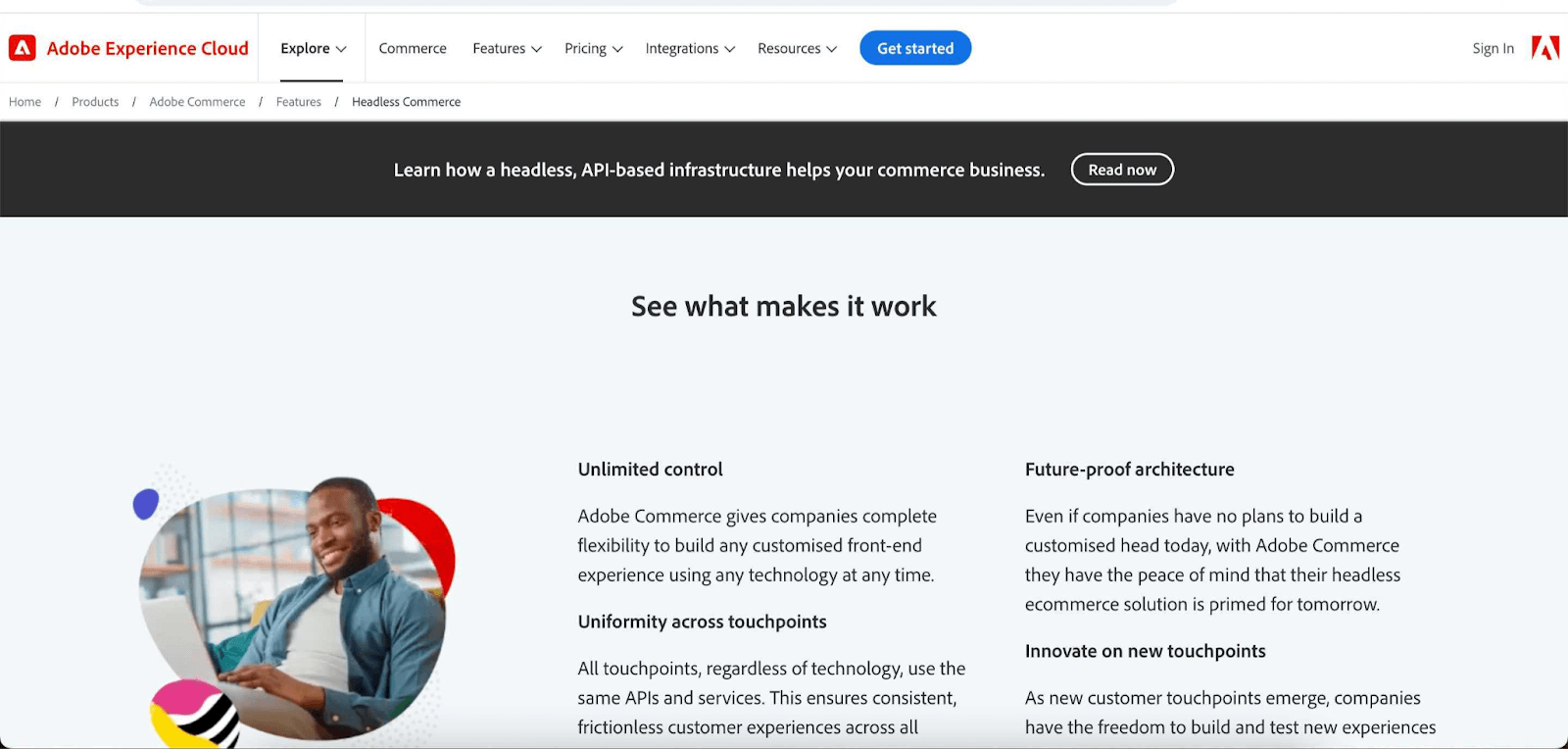
Magento is one of the most popular choices for ecommerce stores and for a good reason. If you have a handy developer, the wide range of customizations allows you to build just about anything you can think of.
With their PWA Studio and Adobe Experience Manager, you can not only share and manage content from one repository. You can also create fully customized experiences for individual shoppers. Couple that with third-party integrations and you have a recipe for success.
Magento is built for businesses obsessing over data analytics. You can keep track of your inventory and key metrics from a single dashboard, or build visualizations based on those data points. You can also turn your Magento website into a mobile app.
Pricing is not publicly available, but basic research will show you that it can cost over $100,000 to build and set up a headless ecommerce store in Magento.
Salesforce Commerce Cloud
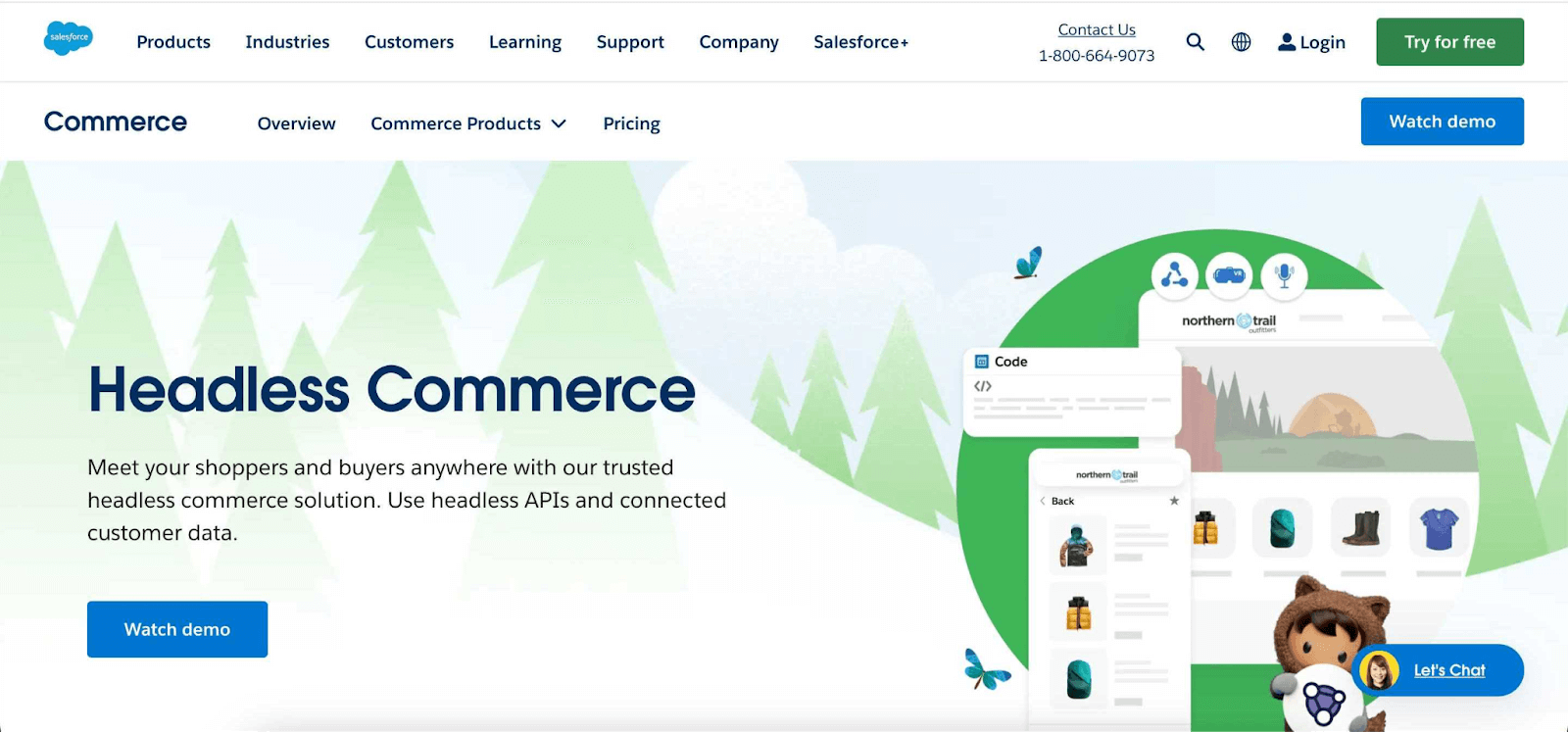
If you’re already deep in the Salesforce ecosystem, using this headless setup is a natural choice. Previously known as Demandware or Cloudcraze (depending on whom you sell to), this platform connects seamlessly to your CRM and have your store in a secure and fully customizable platform.
You can choose your preferred front-end framework, and for the back-end, you have a wide variety of developer resources you can use to get started. API choices are abundant if you want to customize your functionalities with specific data and objects. APIs work quickly and thanks to response caching, you’ll have no troubles with your store performance.
The pricing system works in a different way - instead of paying flat fees, you pay in percentage. Depending on whether you’re in B2C or B2B, Salesforce headless will cost 3% or 2% of your gross merchandise value, respectively.
Commercetools
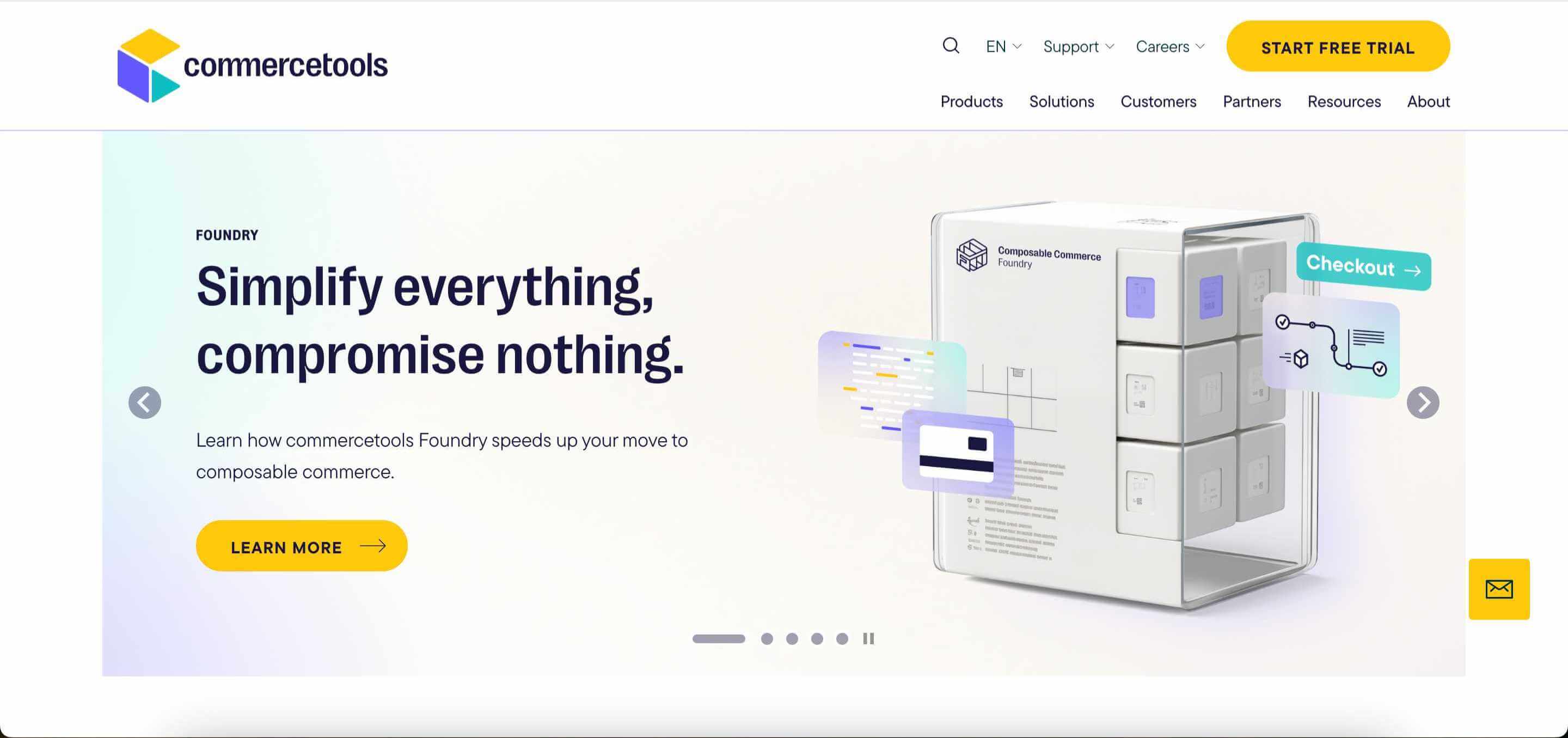
While it may not get the recognition of Shopify and BigCommerce, Commercetools is one of the best-known headless ecommerce platforms today. Primary reasons for this include their cloud-based API model and quick and easy set-up that does not require highly skilled developers to get a store up and running.
Commercetools has been around since 2013 and they paved their way as one of the top headless choices because of its ease of use. However, bear in mind that to get the full functionalities that come with a platform such as Shopify, you're going to need quite a few customizations and a developer who knows their way around this platform.
The free trial is generous and lasts 60 days - after that, you need to get in touch to get a personalized quote based on your requirements.
Wrapping up
Headless is not just an afterthought - having a headless store makes it easier to share content, prevent vendor lock-in, make your developers love you, create personalized experiences for your customers, and more. And while there are plenty of options out there, the great news is that there is something out there for everyone’s budget.
And if you want to convert your ecommerce website into a mobile app and headless seems like too much hassle - we have just what you need. At MobiLoud, we can help you quickly turn an entire website into a functional, beautiful app.
See why 2,000 companies use MobiLoud for their mobile apps. Get a free preview of your app or book your free demo today to learn more!
FAQs
Convert your website into a mobile app









